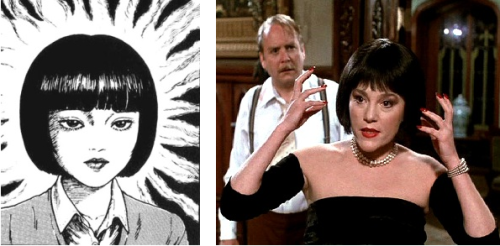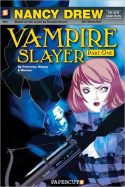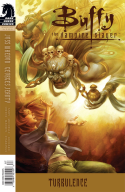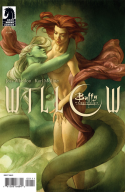By Mitsukazu Mihara | Published by TOKYOPOP
 I blame my “meh” reaction to Mitsukazu Miharu’s Haunted House—which I honestly wanted to like!—on the back cover, which promises that readers will be “kept guessing—and giggling” by the behavior of Sabato Obiga’s flamboyantly goth parents. I might’ve smiled a time or two, but that’s about it.
I blame my “meh” reaction to Mitsukazu Miharu’s Haunted House—which I honestly wanted to like!—on the back cover, which promises that readers will be “kept guessing—and giggling” by the behavior of Sabato Obiga’s flamboyantly goth parents. I might’ve smiled a time or two, but that’s about it.
The basic premise here is simple and reiterated several times throughout the volume: Sabato would like a steady girlfriend, but they inevitably ask to see his house, which means they will have to meet his bizarre, “death-flavored” family and be scared off by their creepy antics. Sabato’s mother strongly resembles Morticia Addams, his father (despite being a banker) often sports a sort of Victorian dandy look, and his twin sisters have a gothic lolita vibe and spend their free time making voodoo dolls. The Obiga family also likes to decorate their home with skeletons and shrines and threatens to serve the family cat for dinner. Sabato always obtains their promise to behave before inviting a girl over, but this is invariably broken.
Haunted House is pretty repetitive, but I think I wouldn’t have been dissastified with it if the powers that be at TOKYOPOP hadn’t strongly hinted that Sabato’s family has some reason for treating him like they do. Okay, yes, they abruptly promise to support him when it seems that he, after fancying a long string of random ladies, seems to have fallen in love at last, but it’s not like they actually follow through with this in any meaningful way.
Looking kooky is one thing, but they’re frequently just down-right mean. At one point, Sabato is hospitalized with a broken leg and his family comes to visit. Most of what they do is innocuous—bringing him only hospital-themed horror novels to read, for example—but his mother actually feeds him dog food. I just don’t get it. Is that supposed to be funny? Is that supposed to be someone who is merely tormenting their kid, as the back cover implies, in an effort to encourage him to grow up, become an independent person, and stop pursuing meaningless relationships with random girls?
I don’t know, but I am certain that I am thinking too hard about this. And I partly blame the back cover that encouraged me to expect more from a story that is really just a diverting bit of goofiness.





























Recent Comments